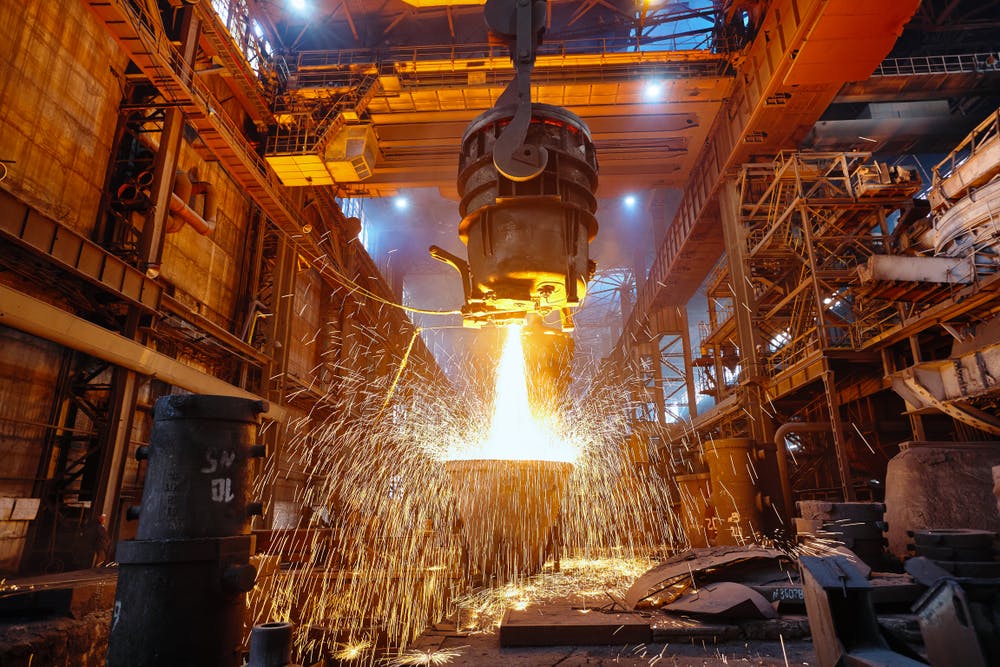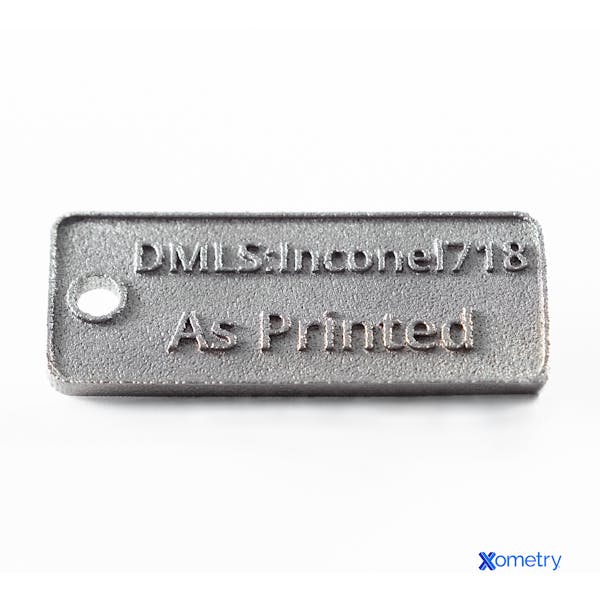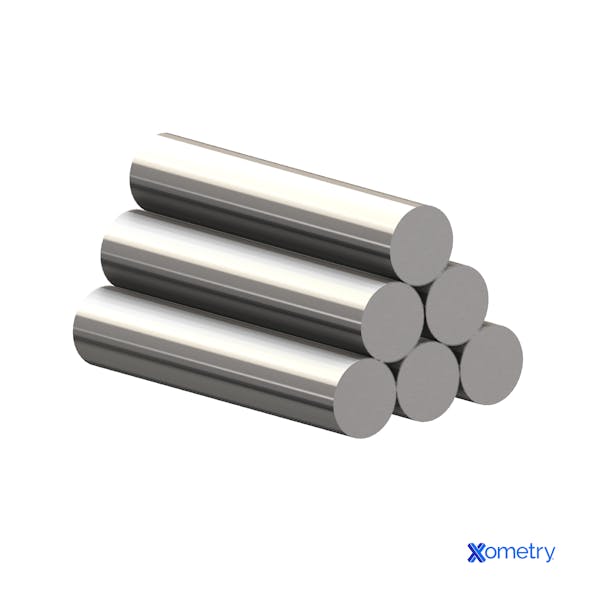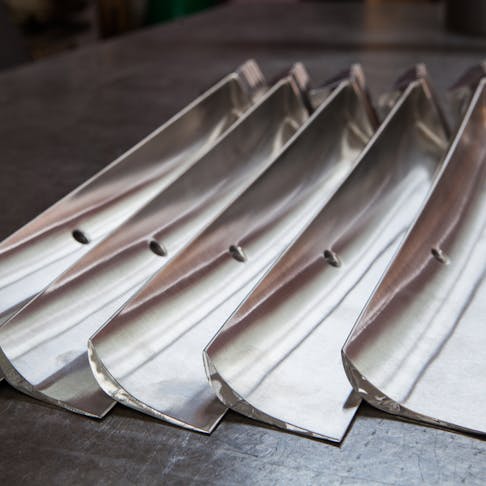Superalloys are high-performance metallic materials composed of at least two elements exploited for their temperature and chemical resistance, and high strength. Superalloys find many applications in harsh environments in industries including: medical, aerospace, and chemical processing. In these industries, superalloys are used as medical implants, turbine blades, and instruments. Superalloys are most commonly nickel-, iron-, or cobalt-based. The main advantages of using these materials are their heat resistance and strength properties.
This article will further discuss superalloys, their properties, applications, types, and advantages.
What Is a Superalloy?
A superalloy is an alloy that has enhanced properties when compared to a regular alloy. An alloy is a metallic material that is composed of two or more different elements, at least one of which is a metal (often, all the elements are metals). A common example is steel, which is made using carbon and iron. Superalloys exhibit increased strength, durability, and temperature resistance. Superalloys are usually classified as either nickel-based, cobalt-based, or iron-based.
Other Terms for Superalloys
A superalloy is sometimes also referred to as a high-performance alloy. “Superalloys” should not be confused with “alloys” as “alloys” have poorer performing properties. In addition, the name Nimonic® refers to a family of nickel-based, high-temperature low-creep superalloys.
How Are Superalloys Produced?
The production of superalloys involves casting. Two forms of casting used to make superalloys are directionally solidified casting and single-crystal casting. Directionally solidified casting involves casting the metal and cooling it very slowly to control the growth of the grain structure. Single-crystal casting works similarly. However, the temperature is controlled to a much higher degree, and any irregularity will result in a failed cast. Using single-crystal casting results in over 95% of a cast being grown from a single crystal. This prevents slippage of the grain boundary usually found in metals. Figure 1 is a picture of metal casting:

Properties of Superalloys
The main benefit of superalloys is the high-performing properties they experience when exposed to high temperatures:
- Corrosion resistance
- Oxidation resistance
- Friction resistance
- High strength
- High heat resistance
Mechanical Properties of Superalloys
The most desired mechanical property of superalloys is their high strength. However, superalloys also benefit from:
- High creep resistance
- Wear resistance
- High fatigue life
- Very hard
Chemical Properties of Superalloys
The most useful chemical property of superalloys is their high corrosion resistance. To achieve this, one of the two elements that make up an alloy must be selectively oxidized. Nickel, cobalt, and iron alloys use the selective oxidation of aluminum or chromium to protect them from oxidation. For this to successfully slow down the rate of oxidation, the aluminum or chromium must cover the entire surface of the superalloy.
Types of Superalloys
There are five main types of superalloys: nickel, iron, cobalt, titanium, and niobium. Each superalloy is discussed below:
1. Nickel-Based Superalloys
Nickel-based superalloys most commonly consist of nickel and aluminum and/or titanium. These alloys are widely used as turbine blades in jet engines and turbochargers due to their desirable material properties at high temperatures. An example of a nickel-base superalloy is Inconel®. Inconel® is made of nickel and chromium which results in high levels of corrosion resistance at high temperatures.

2. Iron-Based Superalloys
Iron-based superalloys are formed of iron and nickel or chromium. Iron-based alloys are cheaper than other superalloys and are well-known for their wear resistance. Iron-based alloys are used in aircraft bearings and other applications which are subject to moving contact.
3. Cobalt-Based Superalloys
A cobalt superalloy contains 50–60% cobalt mixed with 20–30% chromium and 5–10% tungsten. Cobalt alloys have a high fatigue life and higher strength than iron- and nickel-based superalloys in high-temperature applications. Due to their high corrosion resistance, they form some of the parts of a gas turbine that are exposed to the atmosphere.
4. Titanium-Based Superalloys
Titanium-based superalloys use titanium mixed with roughly 11% molybdenum which reduces the elastic modulus of the superalloy. A titanium-based superalloy’s unique property is its high hardness. Titanium-based superalloys find many applications in the aerospace and biomedical industry. One example of a titanium-based superalloy is Ti6AL4V which is a titanium-aluminum alloy.
5. Niobium-Based Superalloys
Niobium-based superalloys are often made of niobium and nickel. Niobium-based superalloys have relatively low strength when compared to other nickel-based base alloys. However, they retain their strength much better than nickel-based alloys at high temperatures. Niobium-based alloys have high usage in jet engines and rockets thanks to their high-temperature resistance.
Applications of Superalloys
Superalloys are used in high-performance applications in which their enhanced properties can be exploited, as long as it is cost-effective to use them. Examples of the use of superalloys in different applications are listed below:
1. Medical Devices
Medical devices are considered to be equipment used in the medical industry to support procedures. Nickel superalloys are used in the medical industry for surgical instruments, implants, and hospital equipment. These superalloys are being used as they are hygienic, corrosion-resistant, and have and can produce an excellent surface finish. By using hygienic and corrosion-resistant superalloys, safety can be improved.
2. Automotive Industry
The automotive industry includes all organizations involved in producing items used in cars, motorbikes, lorries, etc. Superalloys are used for turbochargers, in which their high-temperature performance proves advantageous. The benefit of using superalloys in this application is that the materials can endure the harsh conditions experienced in the turbocharger.
3. Power Generation
The power generation or energy industry produces energy through nuclear power plants, fossil fuel power plants, wind turbines, solar panels, and hydroelectric dams. Superalloys are used in heat exchangers, gas boilers, steam turbines, gas turbines, and furnaces within the energy industry. Various grades of Inconel® and Incoloy® are used in these applications. The benefit of using superalloys is that they can withstand the hot corrosive environment that these components operate in.
4. Oil and Gas Industry
The oil and gas industry extracts oil and natural gas out of underground reserves either on land or at sea to produce oils and plastics and to be used as energy. Superalloys are used to manufacture casings and mandrels for drilling. Superalloys are required for this application due to the high pressure and severe corrosion experienced deep below the water's surface. The benefit of using superalloys for this application is that they can resist the corrosion usually caused by the local environment.
5. Chemical Processing
The chemical processing industry includes organizations and companies that process chemicals on an industrial scale for use in plastics, cosmetics, insecticides, etc. Superalloys are used for components in the processing machines of chemicals, including valves and instruments. Superalloys such as Hastelloy® and Monel® are being used in this industry for their corrosion-resistant properties. Using these materials reduces the corrosion experienced by the instruments used.
6. Electronics Industry
The electronics industry manufactures electronic components that can be found in laptops, phones, car engine management units, speakers, etc. Superalloys are used in optical and electrical support systems for telescopes and lasers as they have a low coefficient of thermal expansion. This creates dimensional stability and reduces the errors caused by the expansion and movement of components in telescopes.
7. Military and Defense Industry
The military and defense industry operates hardware such as tanks, jets, and ships to provide national security. Superalloys are desirable for their temperature resistance and high strength, mainly in gas turbine engines used by tanks, jets, and ships. In addition, superalloys offer light weight and environmental resistance—both sought-after properties in this field of higher-performing equipment.
8. Aerospace Industry
The aerospace industry covers all goods manufactured to be used in airborne vehicles including commercial aircraft, drones, and satellites. Superalloys are used in the aerospace industry to build jet engines in which their high mechanical strength in elevated temperatures can be exploited. The use of high-strength-to-weight-ratio alloys improves the thrust-to-weight ratio performance of modern jet engines. Superalloys are used over composites in turbine applications due to the high temperatures the parts are exposed to.

Advantages of Superalloys
The main advantage superalloys have over other materials is their temperature resistance. Other advantages include:
- Possessing excellent mechanical strength.
- Exhibiting good chemical resistance.
- Having good surface stability.
- Displaying high resistance to creep deformation.
Disadvantages of Superalloys
The biggest drawback of using superalloys is their high cost. Other disadvantages are:
- Difficult to machine due to high hardness.
- Low thermal conductivity leads to a thermal gradient and stress cracking.
- Require complex casting methods to manufacture.
Superalloys vs. Regular Alloys
Superalloys are set apart from more common alloys as they have far superior mechanical and chemical properties. Metals have a lattice structure that is prone to slip, while metal alloys have a solidified lattice structure that blocks the slip planes. Superalloys are more advanced than metal alloys as they form a two-phase equilibrium microstructure which protects them from multiple failure modes. Superalloys can operate at much higher temperatures than their metal alloy counterparts.
For more information, see our guide on What is an Alloy?
Superalloys vs. Inconel® Alloys?
Inconel® is a group of nickel-based superalloys, so they are very similar to many other superalloys. Inconel® is a trademark name used as a prefix to describe 20 different alloys which are nickel-based and have high-temperature and chemical-resistant properties. In theory, Inconel® could be the same as a super-based alloy if another company were to make a nickel-based alloy of the same constituent materials. However, it would be sold under a different name for trademark reasons.
Summary
This article presented superalloys, explained them, and discussed its various applications. To learn more about superalloys, contact a Xometry representative.
Xometry provides a wide range of manufacturing capabilities and other value-added services for all of your prototyping and production needs. Visit our website to learn more or to request a free, no-obligation quote.
Copyright and Trademark Notices
- Inconel®, Incoloy®, Monel®, and Nimonic® are registered trademarks of Special Metals Corporation
- Hastelloy® is a registered trademark name of Haynes International, Inc.
Disclaimer
The content appearing on this webpage is for informational purposes only. Xometry makes no representation or warranty of any kind, be it expressed or implied, as to the accuracy, completeness, or validity of the information. Any performance parameters, geometric tolerances, specific design features, quality and types of materials, or processes should not be inferred to represent what will be delivered by third-party suppliers or manufacturers through Xometry’s network. Buyers seeking quotes for parts are responsible for defining the specific requirements for those parts. Please refer to our terms and conditions for more information.


